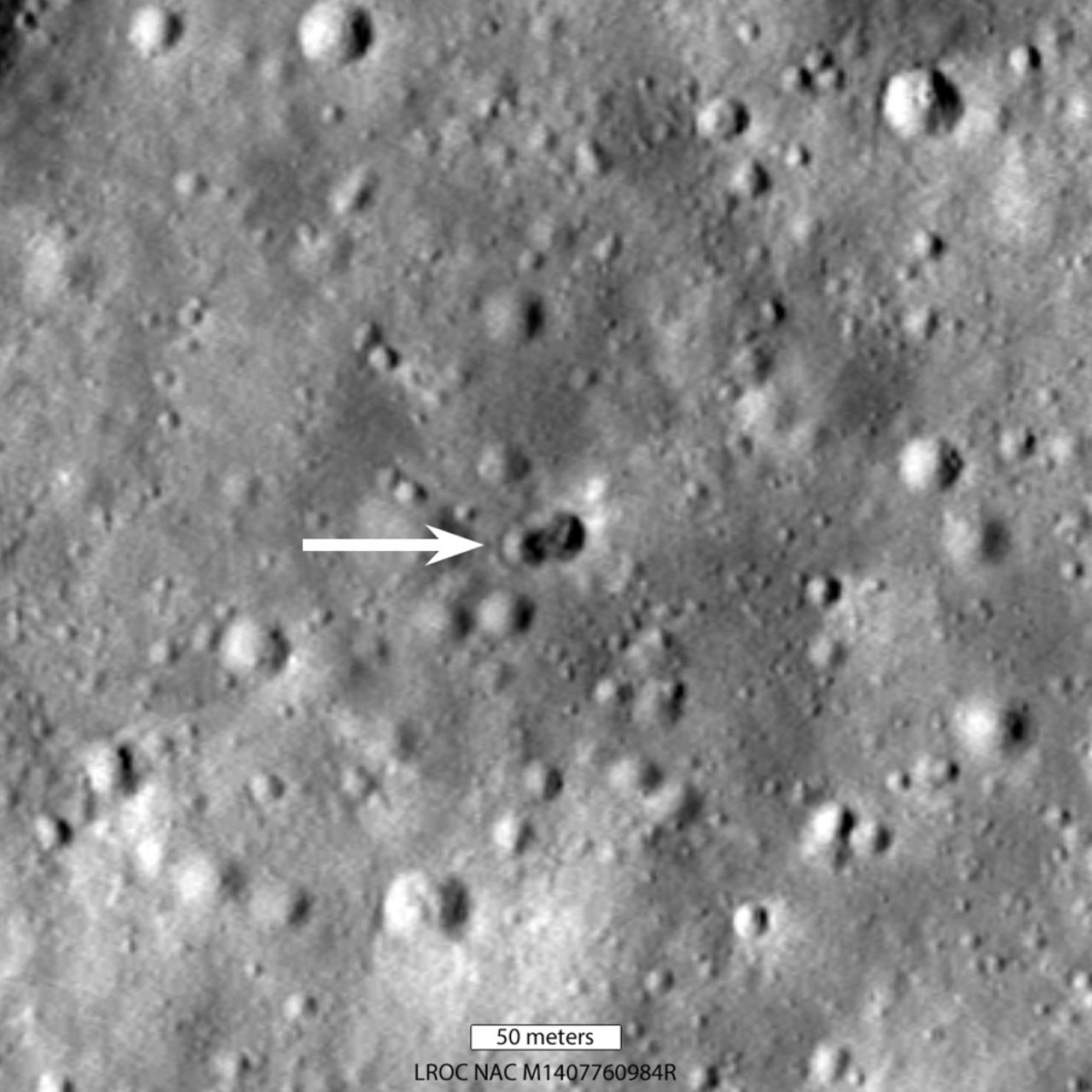
































A rocket body impacted the Moon on March 4, 2022, creating a double crater.
Image: NASA/Goddard/Arizona State UniversityAstronomers have finally identified the impact site of a mystery rocket that curiously created two craters on the dark side of the Moon.
The rocket part hit the Moon on March 4, but astronomers only reported the discovery of the impact site last week. There's now an eastern crater on the Moon about 18 meters in diameter (19.5 yards) that's superimposed on a western crater measuring 16 meters in diameter (17.5 yards).
According to NASA, the double crater may indicate that the rocket body had large masses at each end. So far, no other rocket crashes on the Moon have created double craters, even though Apollo SIV-B craters were larger.
SEE: NASA's Mars helicopter has a problem. This clever software trick could fix it
Neither NASA nor any other astronomers have been able to confirm which nation or company's rocket it was.
"Typically a spent rocket has mass concentrated at the motor end; the rest of the rocket stage mainly consists of an empty fuel tank," said Mark Robinson, a professor in the School of Earth and Space Exploration at Arizona State University, in a NASA press release.
"Since the origin of the rocket body remains uncertain, the double nature of the crater may indicate its identity."
Robinson is also the principal investigator for the NASA Lunar Reconnaissance Orbiter Camera and a new NASA lunar-imaging experiment called ShadowCam.
Per the New York Times, there was speculation in January that the rocket part was the second stage of a SpaceX Falcon 9 that was launched in 2015 on behalf of the National Oceanic and Atmospheric Administration for its "DSCOVR" Deep Space Climate Observatory project. But that was later ruled out.
Bill Gray, the developer of Project Pluto astronomical software, first spotted the rocket in January and was tracking it as it approached the Moon.
SEE: NASA delays its Psyche asteroid mission
He'd posited in January, as reported by Ars Technica, that it was the Falcon 9 part, but a NASA engineer said the launch trajectory didn't fit with the orbit of the rocket.
Gray later concluded the likely candidate was a Long March 3C rocket launched from China in 2014.
But China's Ministry of Foreign Affairs claimed in a statement on February 21 that "the upper stage of the rocket related to the Chang'e-5 mission entered into Earth's atmosphere and completely burned up".
Gray disagrees with China's assessment and thinks it got "two different, but similarly named, lunar missions mixed up".
He also argues some official agency like the US Space Force, or potentially some international agency, should be tracking space junk in far-away space, not just objects like astroids in lower orbit.
"Many more spacecraft are now going into high orbits, and some of them will be taking crews to the moon. Such junk will no longer be merely an annoyance to a small group of astronomers," wrote Gray on his Project Pluto blog.
 Tags quentes :
Inovação
Espaço
Tags quentes :
Inovação
Espaço